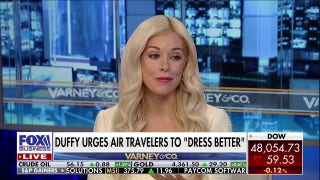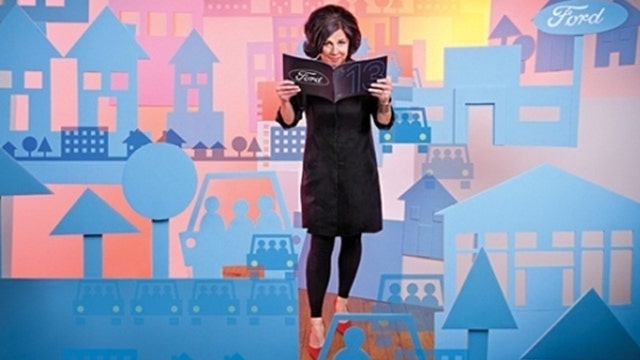One Woman’s Unpredictable Art of ‘Futuring’
If growing up in a recession-era job market taught Sheryl Connelly anything, it’s to never miss an opportunity.
The Ford Motor Company (NYSE:F) global trends and futuring manager said though it's ironic for a person in her role, she believes everything happens for a reason.
“There was never a point in my career that I was like, ‘Oh I’m absolutely where I’m supposed to be.’ A lot of times I was filled with uncertainty and doubt, but you just have to keep moving forward, keep pushing, and trying to explore new boundaries.”
And explore new boundaries she did.
After studying finance at Michigan State University, Connelly went on to earn her master’s and law degrees before pursuing a career in law, working as a litigation attorney in Buffalo. But three years into her law career, she realized it wasn’t what she wanted to do. That’s when she moved on to work at a call center for Ford.
Mixed somewhere between her dream of creating and illustrating the Peanuts cartoon and her desire for something new was Connelly’s ideal job.
She just hadn’t discovered it yet.
The Art of Taking Your Time
Connelly’s job is to look anywhere between two and 20 years into the future and predict trends in the industry, as well as needs and wants of the consumer, to develop ways to help Ford compete better globally, and give consumers what they don’t yet know they want.
It’s a job she never thought she’d have.
And she got there by working her way to the top. After working at that call center when she discovered a career in law wasn’t for her, Connelly followed it up with subsequent positions as communications coordinator, franchising and special projects coordinator, before finally landing the job as futurist.
“I came of age during a recession, which is why I have so many degrees and stayed in school for so long,” Connelly said. “But in hindsight, once I landed the job, I had no regrets. Everything I had done on my journey there prepared me extremely well for the role as futurist.”
In fact, she said the decision to leap from law into the auto industry wasn’t one she took lightly – and one that involved, as she said, a total leap of faith.
“I had spent three years studying. I took two bar exams for New York and Michigan. I thought that’s what I wanted to do for the rest of my life, and then ultimately (I said), ‘I don’t think this is something I want to stick with. I want to try to pursue something else,’” she said.
And it’s the bravery and determination to get it right that took Connelly to new heights and landed her at her own destiny’s doorstep.
She said she advises young people who are similarly growing up in a post-recession-era job market to do the same thing: Try on different careers; figure out what it is you truly want to spend the rest of your life doing, and then do everything you can to make it work.
“The thing is, in hindsight, I know to be young is when you take all of your risk,” she said. “It’s a totally different game when you have a family, and have children and a spouse to support. But don’t be afraid of risk, and don’t be afraid of failure.”
Mixing Career and Passion
In her role, Connelly works with all facets of the Ford brand – and all the people involved in making an idea come to life. When she’s not working with industry experts to come up with new and better designs for future Ford products, she’s sitting down with designers to plan out how to make those ideas reality.
To do that, Connelly, a right-brained thinker who tends to use color, images, intuition and creativity in her job, works with contrasting left-brained folks who use more analytical thinking, numbers, and reasoning to make decisions.
But she says she constantly uses her right-brained thinking to her advantage because she can identify ways to explain very visual ideas to people who think much differently than she does.
“If I am sharing ideas with a group of designers, the conversation might go quite differently than it would be if I were collaborating with a group of engineers. And that’s where my previous job wholesaling cars to dealers came in because you need to come in and read your audience and say, ‘Are they picking up what I’m laying down?’ And so, if I’m dealing with the scientists, I spend more time getting them involved in the process, getting them comfortable with the rigor, the research that went behind it,” Connelly said.
Though she uses different methods to approach different groups of people, she believes people can be both left and right brained thinkers, and, actually, many people are too quick to judge whether they lean more one way than another.
As for herself, Connelly said she tries to utilize both kinds of thinking in her job – and that’s where her love of art and background come into play. She often doodles alongside her project notes. She says it’s not just a distraction from a boring PowerPoint presentation, but it’s a method that helps her remember key points and figures.
Connelly keeps her notes simple…but occasionally, she’ll fill them in more colorfully. Like when coolhunting.com published the notes she kept at this year’s TED conference.
“Those notes actually just started out for my own personal use and I’ve been lucky enough to have been going to the Ted conferences for many years and I find them really inspiring,” she said. “And I find the only way I can hold on to that is to record as much of it as I can in real time and then I go back and add illustrations to reinforce what I heard.”
She said until this year’s notes were published, she’d keep them for herself until she met particularly inspiring presenters and attendees, and then she would offer to share her personalized touches on the conference.




















